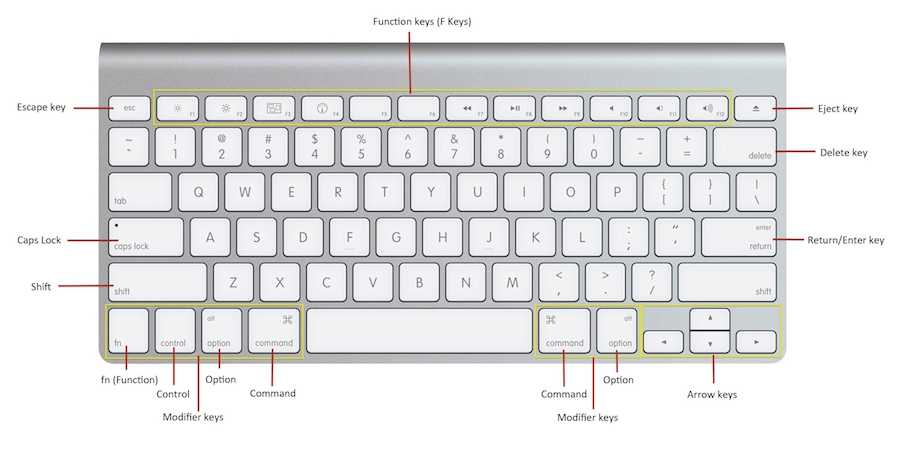

- #Word for mac keyboard shortcuts how to
- #Word for mac keyboard shortcuts full
- #Word for mac keyboard shortcuts plus
If you want to make a universal shortcut, select “All Applications” instead. This will limit the shortcut to just this app. Here, we can click the drop-down arrow in the “Application” field and select the app we want (Pages).
#Word for mac keyboard shortcuts plus
Next, click “App Shortcuts,” and then click the plus sign (+) to add a new rule. To get started, head to System Preferences > Keyboard, and then click the “Shortcuts” tab. Apple’s word processor doesn’t have a keyboard shortcut to format text with the Strike Through style, so we’ll create one. You’ll need to find the exact name of the function that appears in the application’s menu bar, regardless of whether it falls under File, Edit, View, or another section. This works using the labels listed in the menu bar at the top of the screen. You can specify them to work system-wide or restrict them to specific apps. In addition to this exhaustive list of useful text-editing shortcuts, you can also create your own.
#Word for mac keyboard shortcuts how to
How to Create Your Own Keyboard Shortcuts
Command+T: Open a new tab (works in browsers, Apple Notes, Pages, and more). Option+Command+G: Find the previous instance of something. Command+G: Find the next instance of something. Command+F: Open finder to search the document. #Word for mac keyboard shortcuts full
Function+Up or Down Arrow: Page up or down one full “page or “screen.”. The apps in which you use these shortcuts, like word processors and note apps, also tend to share the following common shortcuts: Option+Command+V: Paste style, like text formatting (some apps only). Option+Command+C: Copy style, like text formatting (some apps only). Command+K: Create a hyperlink from the selected text (some apps only). This means you won’t have to remove your hands from the keyboard to do any of the following: You can also combine formatting shortcuts with those for cursor movement and text selection. Shift+Command+Delete: Delete the line to the right of the cursor. Command+Delete: Delete the line to the left of the cursor. Function+Option+Delete: Delete the next word. Function+Delete: Delete the next character (like the Delete key on Windows.). Option+Delete: Delete the previous word. You can even replicate the behavior of the Delete key on Windows. 

There’s more than one way to delete text on macOS.
Option+Command+Shift+V: Paste from clipboard and match style. Here’s how to do all of this using shortcuts: You might know how to copy and paste, but do you know how to paste and match style? This automatically formats the pasted text to match the rest of the document. For example, if you copy text from a web page into a Word document, paste and match style will ignore the web formatting and change the text to the font and size in the text document. Shift+Command+Left or Right Arrow: Highlights all text to the left or right of the cursor. Shift+Command+Up or Down Arrow: Highlights all text above or below cursor. Shift+Up or Down Arrow: Highlights previous or next line of text. Shift+Left or Right Arrow: Highlights previous or next character. You can click and drag to highlight text, but it’s much faster to do so with the following keyboard shortcuts: RELATED: 42+ Text-Editing Keyboard Shortcuts That Work Almost Everywhere Ray Bond/Shutterstock Selecting Text Similar shortcuts are also available on Windows. Shift+Enter: Starts a new line in apps like Messages, Slack, or WYSIWYG editors.  Option+Down Arrow: To the end of current paragraph. Option+Up Arrow: To the beginning of the current paragraph. Command+Right Arrow: To the end of the current line. Command+Left Arrow: To the beginning of the current line. Option+Right Arrow: To the beginning of the next word. Option+Left Arrow: To the beginning of the previous word. Using the Option and Command keys as modifiers, you can move the cursor in the following ways: For a full list of keyboard shortcuts in Word, see Keyboard shortcuts for Microsoft Word.You can use the arrow keys to move the cursor around and press Enter to start a new paragraph. The keyboard shortcuts listed in this article are for the most common tasks in Word Web App. Keyboard shortcuts in Word Web App are very similar to keyboard shortcuts in Microsoft Word. Microsoft Word Web App keyboard shortcuts To search in this topic, press CTRL+F, type the search text in the box, and then press ENTER. For keyboard shortcuts in which you press one key immediately followed by another key, the keys to press are separated by a comma (,). keyboard.įor keyboard shortcuts in which you press two or more keys simultaneously, the keys to press are separated by a plus sign (+). Keys on other layouts might not correspond exactly to the keys on a U.S. The keyboard shortcuts that are described in this Help topic refer to the U.S.
Option+Down Arrow: To the end of current paragraph. Option+Up Arrow: To the beginning of the current paragraph. Command+Right Arrow: To the end of the current line. Command+Left Arrow: To the beginning of the current line. Option+Right Arrow: To the beginning of the next word. Option+Left Arrow: To the beginning of the previous word. Using the Option and Command keys as modifiers, you can move the cursor in the following ways: For a full list of keyboard shortcuts in Word, see Keyboard shortcuts for Microsoft Word.You can use the arrow keys to move the cursor around and press Enter to start a new paragraph. The keyboard shortcuts listed in this article are for the most common tasks in Word Web App. Keyboard shortcuts in Word Web App are very similar to keyboard shortcuts in Microsoft Word. Microsoft Word Web App keyboard shortcuts To search in this topic, press CTRL+F, type the search text in the box, and then press ENTER. For keyboard shortcuts in which you press one key immediately followed by another key, the keys to press are separated by a comma (,). keyboard.įor keyboard shortcuts in which you press two or more keys simultaneously, the keys to press are separated by a plus sign (+). Keys on other layouts might not correspond exactly to the keys on a U.S. The keyboard shortcuts that are described in this Help topic refer to the U.S.








 0 kommentar(er)
0 kommentar(er)
